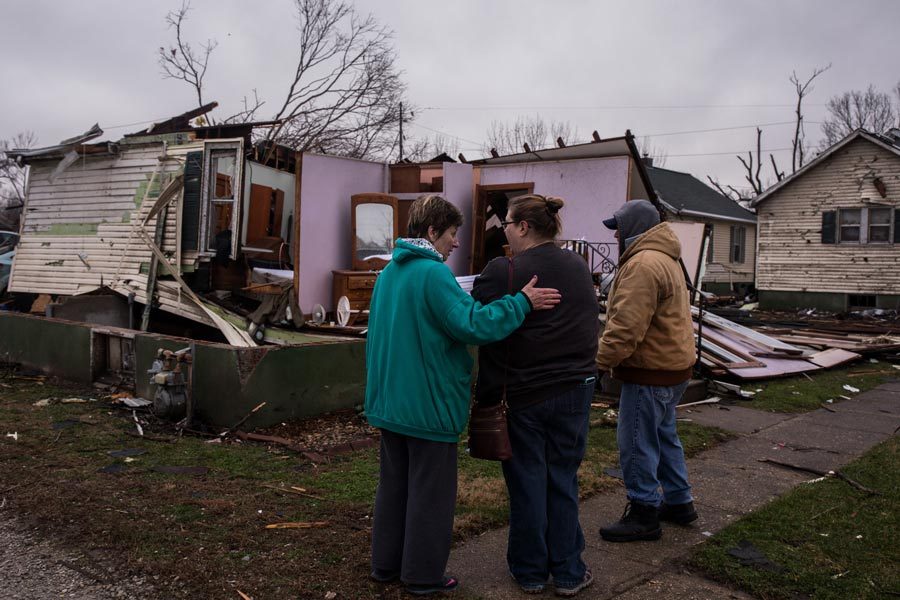Staying safe during tornado season
Resident Nancy Warner, center, gets a hug from Sherry Pagakis as she surveys tornado damage to her house on Wednesday, March 1, 2017 in Naplate, Ill. Neighbor Kip Frazier is on the right. Photo by Zbigniew Bzdak
April 7, 2017
As March ends and April begins, the central United States nears the roughest season of weather it will endure all year. Tornado season in Texas typically begins early April and winds down towards the end of May. On average, Texas experiences 120-130 tornadoes a year, more than any other state. The brunt of these will make landfall in north and east Texas.
Texarkana has experienced 114 tornadoes since 1950 and is usually expect to weather two tornadoes annually. There are multiple tornado warning sirens through the city and surrounding suburbs to warn the community of an impending storm; however, this specific siren system is only designed to serve as an early warning signal for those who are outdoors at the time to seek shelter and tune into the local storm forecast for more information. The sirens are tested every Wednesday at noon, unless dangerous weather patterns exist.
A common misconception in the event of a tornado threat is the difference between a tornado watch and a tornado warning.
A tornado watch is issued when the conditions for the forming of a tornado exist in or near your county. Preparations and safety precautions should be made in the event a tornado warning is issued. Tornado watches for counties in the area of Texarkana are issued by the Shreveport Storm Prediction Center. These weather centers typically cover a region in excess of 20 counties. The average size of a watch area will encompass a multitude of counties.
A tornado warning is issued when a tornado has been sighted or indicated on storm weather radar. This means there is imminent danger and immediate action should be taken. Only your local forecast office will issue tornado warnings, and the warning itself will typically only encompass an area the size of a single county or smaller.
“The safety precautions we take depend on the severity of the tornado. We’re [constantly] listening to the news and weather stations,” Principal Stahl said. “Once it gets close we alert the administration and we’re on watch, [so] we can be prepared at all times for [an emergency].”
In the event a tornado hits, it is most important to seek shelter immediately. If indoors, it’s best to move away from windows and retreat to a basement or windowless room on the interior of the building. If outside, get to sturdy shelter as fast as you can. Remaining in a vehicle is ill advised as there are multiple windows and vehicles are commonly blown off the ground and lifted into the air during stronger tornadoes. If there is no shelter in the immediate area, look for a ditch or low lying area to seek cover.
“Tornado drills are a shelter-in-place type thing,” Stahl said. “We move students away from rooms that have windows in them to protect from flying glass and debris. We bring the top of the math science building and 9th grade building downstairs to get people to more secure areas [as well].”




















